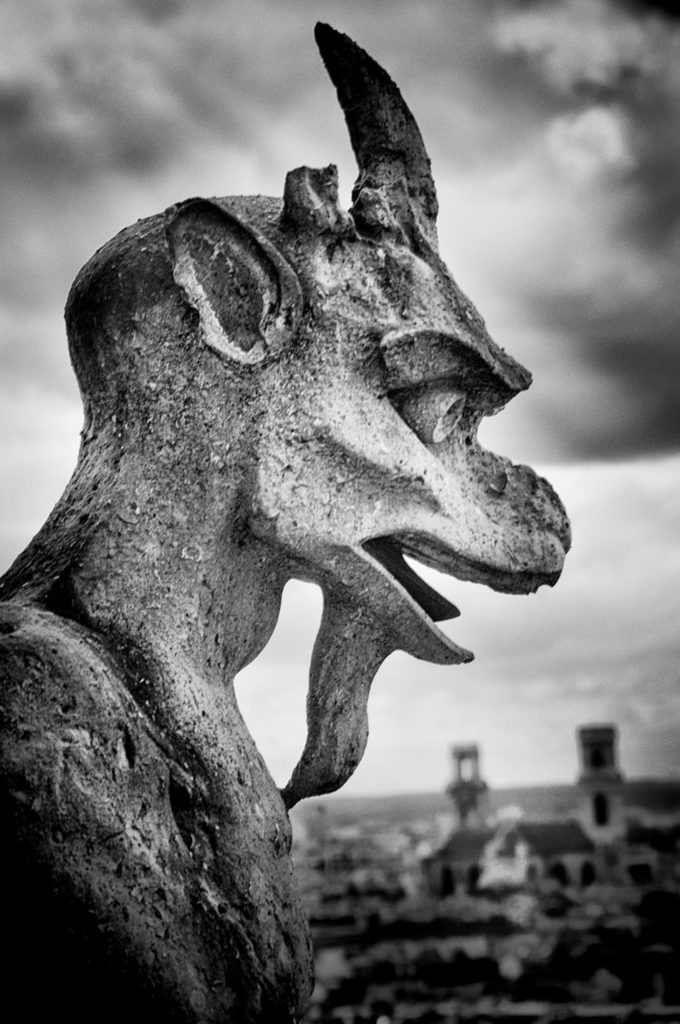A gargoyle is a carved grotesque, with (sometimes) the practical function of serving as a down spout for rain, and often the emotional purpose of warding off evil spirits. The world’s most famous gargoyles are those on the cathedral of Notre Dame in Paris—which, however, are probably as much due to the Gothic romanticist architect Viollet-le-Duc as they are to historical veracity and antiquity. When Viollet-le-Duc reconstructed Notre Dame in the 1860s, it was tumbling down and virtually abandoned. Violett-le-Duc’s renovation was strongly inspired by Victor Hugo’s novel The Hunchback of Notre Dame—a work of romantic fiction not particularly based in historical realities.

Whatever the historical authenticity of the Notre Dame gargoyles, they are a marvelous subject for photography, and a “must see” on any first visit to Paris, particularly if you have kids with you (my fourteen-year-old son Nicky joined me for my last visit to Paris in the spring, so I got a refresher in all things gargoyle, and hot chocolate as well!).
The first cameras were pinhole cameras. Pinhole cameras don’t have a lens. Instead of a lens, light passes through a tiny hole; the light passing through this hole forms the image inside the camera. A camera obscura is a large pinhole camera where light passes through a tiny hole—the smaller the hole, or aperture, the sharper the image—and is projected on the back wall of an otherwise dark room.
The projected image is upside down, but perspective and other characteristics are preserved, so a camera obscura can be used to create detailed drawings that are accurate representations of scenes.
The first camera obscura was created by Arab physicist Ibn al-Haytham in the eleventh century. In the west, the optics of the pinhole effect were imported from the Arab world, and understood as early as the fifteenth century Renaissance (they were described by Leonardo da Vinci and others). The use of the optical pinhole effect in the camera obscura was one of the key discoveries leading up to the invention of photography; if you get the chance, don’t miss the opportunity to visit a large camera obscura, found in public parks in a number of major cities (adjacent to Seal Rocks in San Francisco).
I processed my image of this gargoyle as a demonstration of the post-production pinhole effect (adding the pinhole look-and-feel in the Photoshop darkroom rather than in the camera) for my forthcoming book The Photographers Black and White Handbook. The result is a blend of the Nik Silver Efex Pinhole preset (70%) and the Topaz B&W Effects Pinhole (30%).
Pingback: Pre-order Photographer’s Black and White Handbook—Early-bird discounts expiring